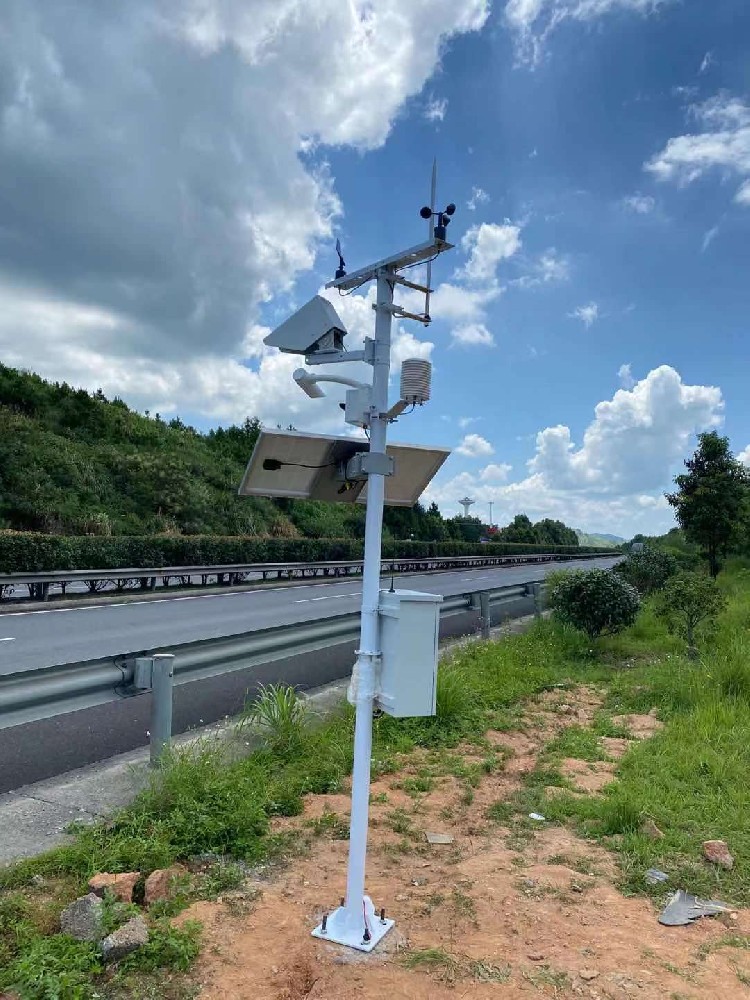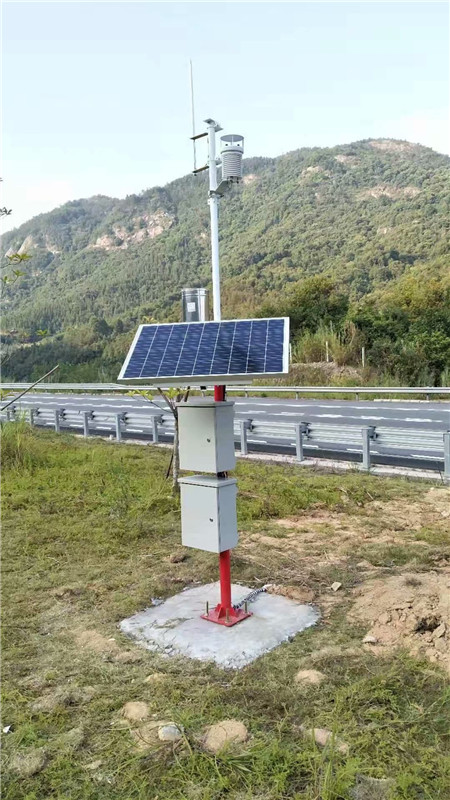

— Blogs —
—Products—
 Consumer hotline +8618073152920
Consumer hotline +8618073152920 WhatsApp:+8615367865107
Address:Room 102, District D, Houhu Industrial Park, Yuelu District, Changsha City, Hunan Province, China
Product knowledge
Time:2024-07-07 17:15:40 Popularity:1189
Introduction Roadside Weather Stations, or Road Weather Stations, are specialized weather stations set up along highways and roads to monitor weather conditions that may affect driving safety and road maintenance. These data are critical for traffic management, roadway maintenance, and assessing pavement conditions, visibility, and the impact of weather on traffic flow. This paper will introduce the basic concepts of roadside weather stations, commonly used sensors, and their role and value.

I. Definition of Roadside Weather Stations
Roadside Weather Stations are weather observation facilities installed next to a roadway, usually including a variety of sensors, data collectors, and communication equipment. These weather stations can monitor real-time temperature, humidity, wind speed, wind direction, precipitation and other weather parameters, and transmit the data to a central database or control center for analysis and management.
II. Sensors of Roadside Weather Stations
1. Temperature Sensor: Used to measure air temperature, it is one of the basic configurations of Roadside Weather Stations.
2. Humidity Sensor: Used to measure the humidity of the air, which is very important for understanding the state of the atmosphere and weather forecasting. Measuring ambient air temperature and relative humidity provides insight into road conditions and the likelihood of fog formation.
3. Wind speed sensor: Used to measure wind speed, which is important for road safety and traffic management.
4. Wind direction sensor: Used to measure wind direction and in conjunction with the wind speed sensor to provide wind direction information for traffic management. Wind speed and direction are monitored to assess side winds that may affect vehicle stability.
5. precipitation sensors: used to measure precipitation and detect the intensity and type of rainfall (e.g., rain, sleet, snow), which is critical for road treatment decisions and predicting slippery conditions.
6. visibility sensor: used to measure visibility, which is important for roadway safety and weather forecasting.
7. air quality sensors: used to measure the concentration of pollutants in the air, important for environmental protection and public health.
8. Roadside Sensors: Infrared or surface-mounted sensors are used to measure the temperature and condition of roads (dry, wet, icy), which helps the management to maintain the roads properly.
Third, the role and value of Roadside Weather Stations
1. Traffic management: Roadside Weather Stations can monitor meteorological conditions in real time and provide traffic management departments with key information such as road traffic conditions, road wetness, visibility, etc., so as to improve road safety and traffic flow.
2. Road maintenance: By monitoring meteorological data, the environmental conditions of road use can be understood, providing a scientific basis for road maintenance and conservation.
3. Weather forecasting: Data collected by roadside weather stations provide important references for weather forecasting and climate research, helping to improve the accuracy of weather forecasts.
4. Climate change research: Long-term collection of meteorological data is of great significance to the study of climate change trends, which helps scientists to analyze the impact of climate change on road facilities and traffic.
5. Environmental protection: Roadside meteorological stations can monitor the concentration of air pollutants and provide air quality data for environmental protection departments, which helps to formulate pollution control measures.
6. Enhanced Safety.
- Early Warning System:Provides drivers and traffic management with timely warnings about hazardous conditions, reducing accidents caused by weather-related factors.
- Optimize Maintenance:Improve road safety and traffic flow by predicting freezing conditions or heavy precipitation and implementing forward-looking road treatment strategies.

Conclusion:Roadside Weather Stations are an important meteorological observation system that provides powerful support to the fields of traffic management, road maintenance, weather forecasting, climate change research and environmental protection by monitoring and recording meteorological data in real time.
Roadside Weather Stations are an integral part of the modern road network, providing real-time weather data that is critical to enhancing road safety, optimizing maintenance operations and improving overall traffic efficiency. By integrating advanced sensors and data analytics, these stations are able to make informed decisions that reduce the risks associated with severe weather conditions, ensuring a safer and more efficient travel experience for drivers worldwide.
Related recommendations
Sensors & Weather Stations Catalog
Agriculture Sensors and Weather Stations Catalog-NiuBoL.pdf
Weather Stations Catalog-NiuBoL.pdf
Related products
 Combined air temperature and relative humidity sensor
Combined air temperature and relative humidity sensor Soil Moisture Temperature sensor for irrigation
Soil Moisture Temperature sensor for irrigation Soil pH sensor RS485 soil Testing instrument soil ph meter for agriculture
Soil pH sensor RS485 soil Testing instrument soil ph meter for agriculture Wind Speed sensor Output Modbus/RS485/Analog/0-5V/4-20mA
Wind Speed sensor Output Modbus/RS485/Analog/0-5V/4-20mA Tipping bucket rain gauge for weather monitoring auto rainfall sensor RS485/Outdoor/stainless steel
Tipping bucket rain gauge for weather monitoring auto rainfall sensor RS485/Outdoor/stainless steel Pyranometer Solar Radiation Sensor 4-20mA/RS485
Pyranometer Solar Radiation Sensor 4-20mA/RS485
Screenshot, WhatsApp to identify the QR code
WhatsApp number:+8615367865107
(Click on WhatsApp to copy and add friends)